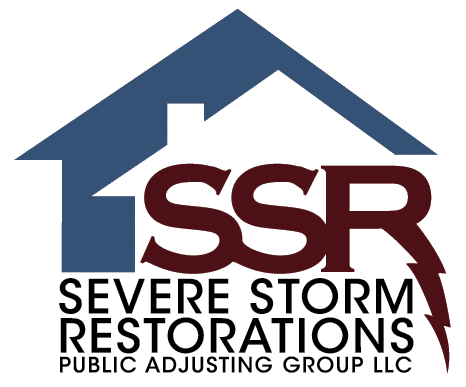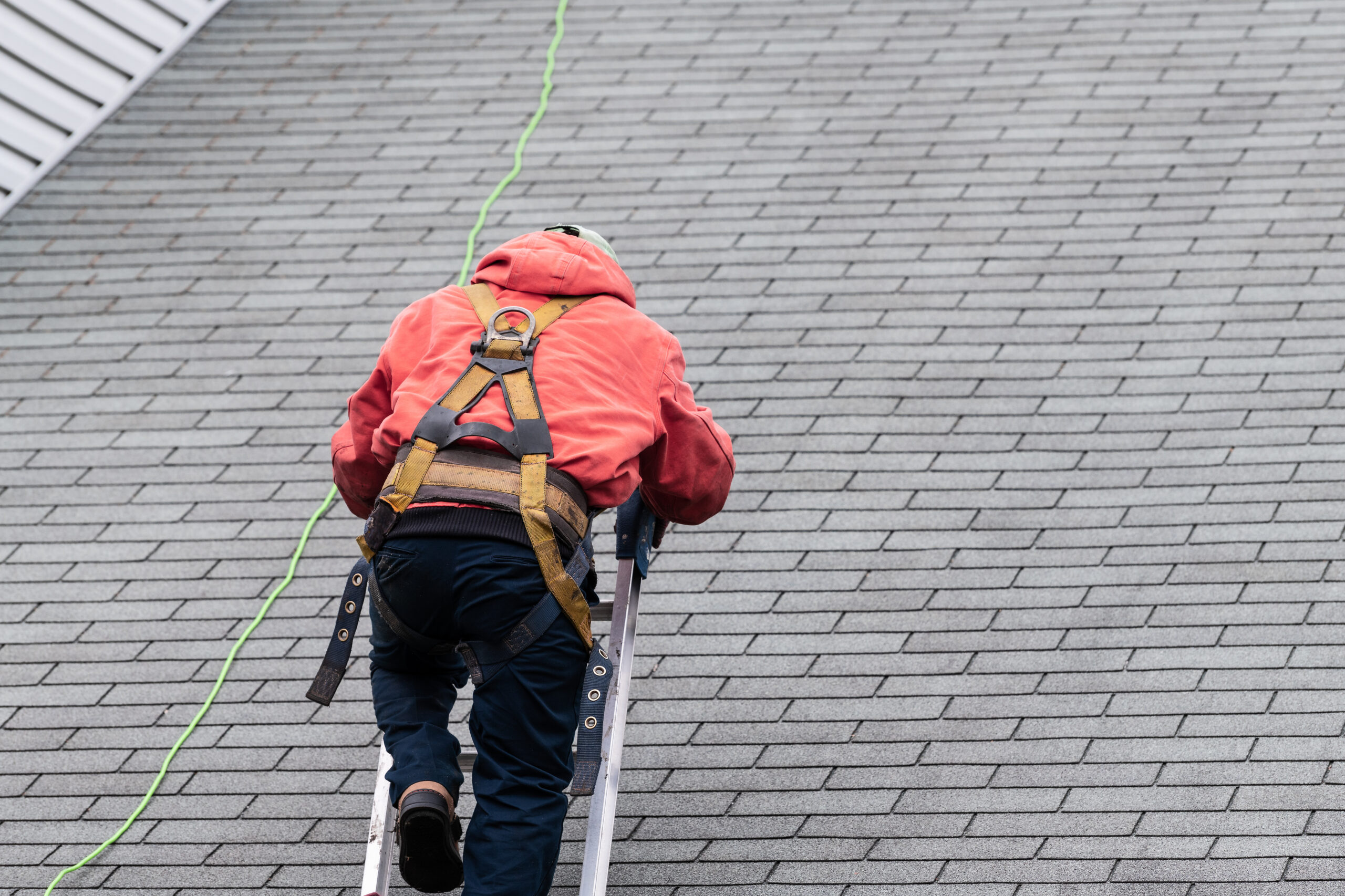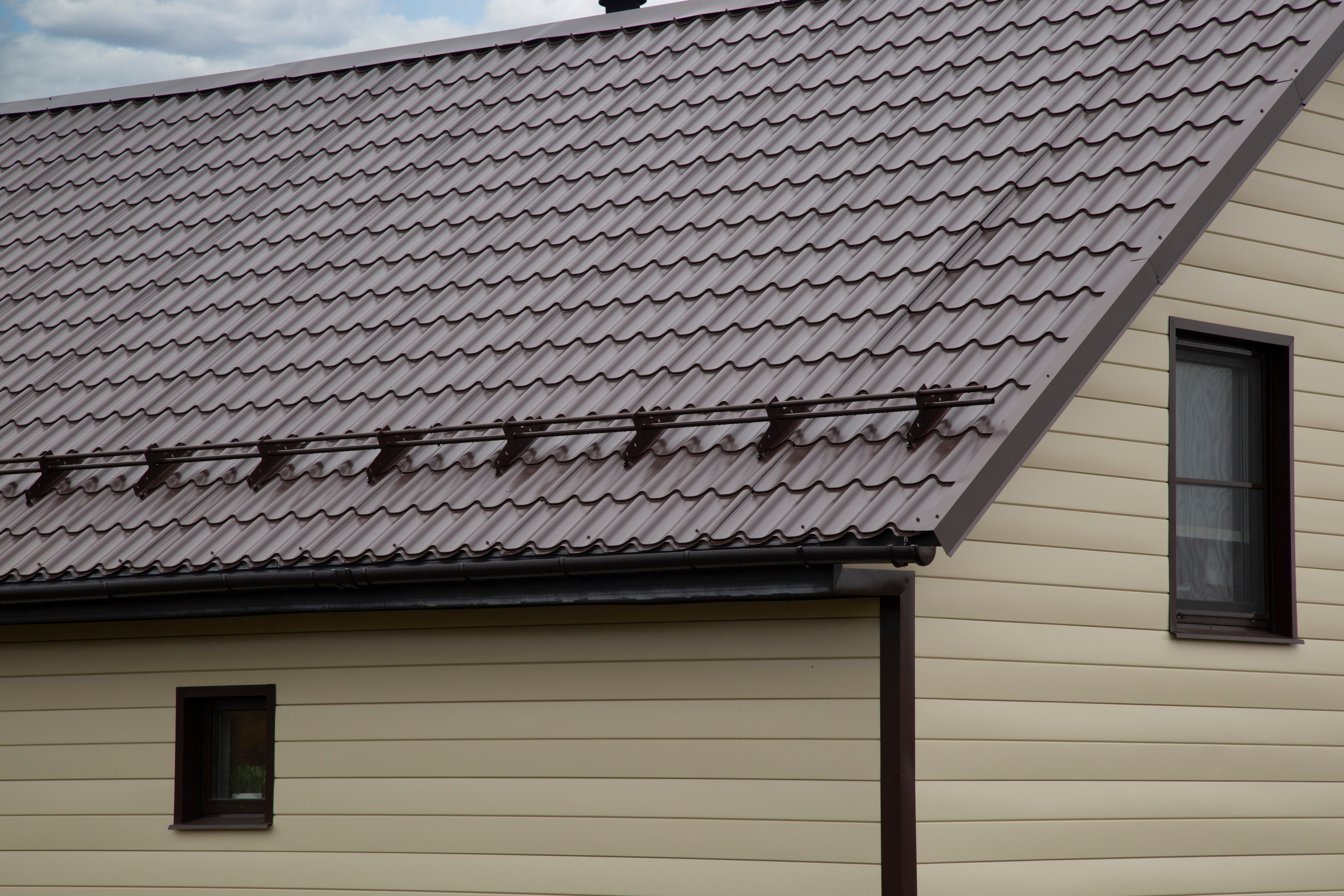Choosing the right roofing material is one of the most important decisions you’ll make as a homeowner or property manager. Your roof is not only a critical component of your property’s structure, but it also plays a significant role in protecting your home or building from the elements. The roofing material you select impacts more than just appearance—it affects the longevity, durability, and overall performance of your roof. A carefully chosen material can increase your property’s value, reduce energy costs, and minimize future maintenance expenses.
The aesthetic appeal of your roof is another key consideration. The material you choose can significantly enhance your home’s curb appeal and complement its architectural style. Whether you’re aiming for a classic, modern, or rustic look, selecting a roofing material that aligns with your design preferences will contribute to your property’s overall appearance and character.
In addition to aesthetics, durability is a crucial factor. Different roofing materials vary in terms of how long they last and how well they withstand harsh weather conditions like rain, wind, hail, and snow. Investing in a durable roofing material can save you from costly repairs down the road and ensure your roof remains intact for years to come. Understanding how each material responds to your local climate is essential for making a long-term investment.
Energy efficiency is another critical consideration, especially in today’s environmentally-conscious world. Some roofing materials offer better insulation and heat reflection, helping to regulate the temperature inside your home. This can lower your energy bills and make your home more eco-friendly. Roofing materials like metal and certain types of shingles are known for their energy-efficient properties, while others may require additional insulation to achieve similar results.
With a variety of roofing materials available on the market, it’s essential to understand the pros and cons of each option. Factors such as cost, maintenance, and local building codes may also influence your decision. By thoroughly evaluating the strengths and weaknesses of each material, you’ll be better equipped to choose a roofing solution that fits your specific needs and budget.
In this guide, we’ll explore the different types of roofing materials in detail, highlighting their key benefits and drawbacks. Whether you’re replacing an old roof or installing a new one, this guide will help you make an informed decision about which material is best for your home or business.
Asphalt Shingles
Overview:
Asphalt shingles are by far the most common roofing material in North America, and for good reason. Their popularity stems from their affordability, ease of installation, and the wide range of colors and styles available to suit various home designs. Typically constructed with a fiberglass base, asphalt shingles are coated with asphalt and topped with granules to create a durable, weather-resistant surface. While they may not last as long as other roofing materials, asphalt shingles offer a great balance between cost and performance, making them a favorite for many homeowners.
Pros:
- Affordability: One of the main reasons asphalt shingles are so widely used is their cost-effectiveness. They are one of the most affordable roofing materials on the market, making them an attractive option for homeowners on a budget. Despite their lower price point, they still offer reliable protection for your home, making them a great value.
- Versatility: Another major advantage of asphalt shingles is their versatility. These shingles come in a wide array of colors, styles, and thicknesses, allowing homeowners to find the perfect match for their architectural preferences. Whether you want a traditional look or a modern aesthetic, there’s likely an asphalt shingle that fits your vision.
- Easy Installation: Asphalt shingles are relatively easy to install compared to other roofing materials. Their lightweight and simple design make them quicker to apply, which can significantly reduce labor costs. This makes them a popular choice for homeowners looking for a roofing solution that won’t take too long to install.
- Repairable: One of the convenient features of asphalt shingles is that they are easily repairable. If a few shingles become damaged due to wind or other factors, individual shingles can be replaced without needing to replace the entire roof. This helps keep maintenance costs low and extends the overall life of the roof.
Cons:
- Shorter Lifespan: While asphalt shingles are affordable, they don’t last as long as other, more durable roofing materials. Depending on the quality of the shingles and environmental factors, they typically have a lifespan of about 15-30 years. This means homeowners may need to replace their roof sooner compared to those who choose longer-lasting materials like metal or tile.
- Prone to Damage: Asphalt shingles are more susceptible to damage from extreme weather conditions. High winds, hail, and even heavy rain can cause the shingles to crack, blow off, or deteriorate more quickly. In regions prone to severe weather, asphalt shingles may not be the most durable option.
- Environmental Impact: One of the major downsides of asphalt shingles is their environmental impact. They are not recyclable, which means that when they are replaced, they typically end up in landfills. For homeowners seeking a more eco-friendly roofing material, this is something to consider.
Best For:
Asphalt shingles are best suited for homeowners who want an affordable, easy-to-install roofing solution that provides solid protection. They are particularly well-suited for homes in regions with moderate climates, where extreme weather conditions like hail or high winds are less common. For those on a budget or looking for a quick roofing installation, asphalt shingles are an excellent choice.
Metal Roofing
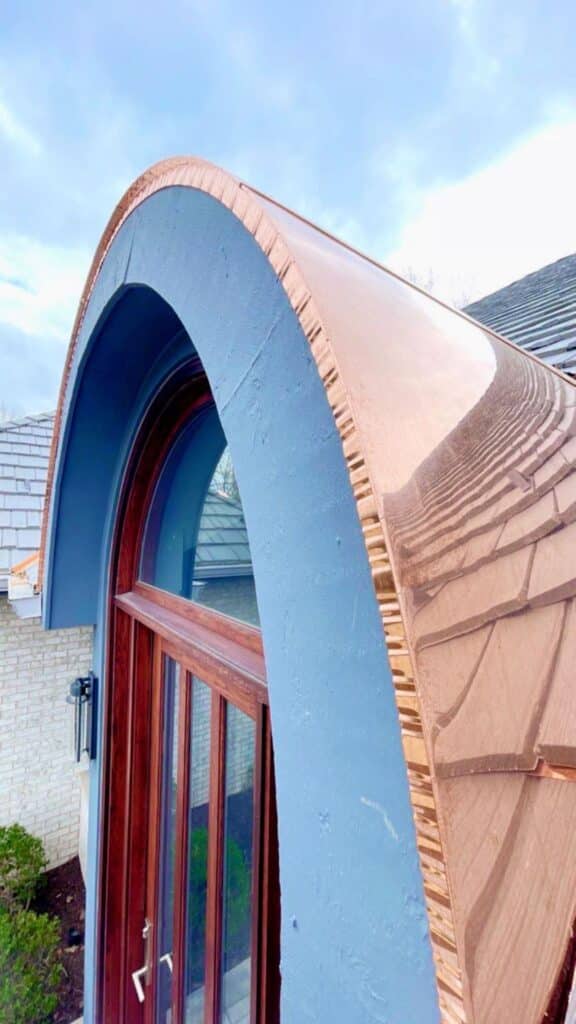
Overview:
Metal roofing is becoming an increasingly popular choice for both residential and commercial properties due to its exceptional durability, modern appearance, and eco-friendly benefits. Available in a variety of materials such as aluminum, steel, copper, and zinc, metal roofs are known for their strength and ability to withstand harsh weather conditions. Whether you’re in a region that experiences heavy snowfall, high winds, or intense heat, metal roofing offers superior protection compared to traditional materials. Additionally, its sleek, modern look can enhance the curb appeal of any property, making it a favorite among homeowners looking for both performance and style.
Pros:
- Longevity: One of the standout benefits of metal roofing is its impressive lifespan. Unlike asphalt shingles, which may need replacement after 15-30 years, metal roofs can last anywhere from 40 to 70 years, depending on the specific material and maintenance. This longevity means that while the initial investment is higher, the long-term savings on replacement and repairs can make metal roofing a more cost-effective option over time.
- Energy Efficiency: Metal roofs are highly energy-efficient due to their ability to reflect sunlight. By reflecting heat away from the home, metal roofs reduce the amount of heat absorbed into the building, helping to keep the interior cooler during the summer months. This can lead to significant savings on cooling costs, making metal roofs an excellent choice for those looking to reduce energy bills and improve their property’s overall energy efficiency.
- Durability: When it comes to weather resistance, metal roofs are among the most durable materials available. They are resistant to fire, rot, mildew, and insect damage, making them ideal for areas prone to extreme weather conditions or environmental hazards. Metal roofing can withstand high winds, heavy snowfall, and even hail, ensuring your home is protected no matter what nature throws at it.
- Eco-Friendly: For environmentally-conscious homeowners, metal roofing is an excellent choice. Many metal roofing materials are made from recycled content, and at the end of their life, they can be fully recycled rather than ending up in a landfill like asphalt shingles. By choosing metal roofing, you’re not only making a sustainable choice but also reducing the overall environmental impact of your home’s roof.
Cons:
- Higher Upfront Cost: While metal roofs offer long-term benefits in terms of durability and energy savings, they tend to have a higher upfront cost compared to more traditional materials like asphalt shingles. The cost of materials, as well as the specialized installation required, can make metal roofing a more expensive initial investment. However, this is often offset by the roof’s long lifespan and lower maintenance costs.
- Noise: One of the common concerns with metal roofing is noise, particularly during heavy rain or hailstorms. The sound of rain hitting a metal roof can be louder than that of traditional roofing materials. However, this issue can be mitigated with proper insulation or soundproofing materials beneath the roof, helping to dampen the noise and make the interior quieter during storms.
- Expansion and Contraction: Metal roofs are subject to expansion and contraction due to temperature changes. This can cause panels to loosen or fasteners to weaken over time, leading to potential issues with the roof’s structure. Proper installation and regular maintenance can help minimize this risk, ensuring that the metal roof remains secure and functional even in fluctuating temperatures.
Best For:
Metal roofing is ideal for homeowners seeking a long-lasting, energy-efficient roofing solution that can withstand extreme weather conditions. It’s particularly beneficial for those living in areas prone to high winds, heavy snowfall, or harsh sun exposure. Additionally, homeowners looking to make an eco-friendly choice will appreciate metal roofing’s recyclability and energy-saving properties. While the initial cost may be higher, the durability and efficiency of metal roofs make them a valuable investment in the long run.
Clay and Concrete Tiles
Overview:
Clay and concrete tiles have long been associated with Mediterranean, Spanish, and southwestern-style architecture, lending a classic and timeless look to homes in these regions. These tiles are not only visually appealing but are also highly durable, making them a popular choice for homeowners who want a roofing material that can stand the test of time. However, their weight and the need for specialized installation often make them more suitable for specific home styles and climates. Their unique blend of functionality and beauty ensures they remain a top choice for those looking to elevate their home’s appearance and overall value.
Pros:
- Longevity: One of the most significant benefits of clay and concrete tiles is their longevity. With proper maintenance, these tiles can last anywhere from 50 to 100 years, making them one of the most long-lasting roofing materials on the market. Homeowners who invest in clay or concrete tiles won’t need to worry about frequent roof replacements, adding long-term value to their property.
- Fire Resistant: Clay and concrete tiles are inherently fire-resistant, offering superior protection for homes in fire-prone areas. This characteristic provides homeowners with added peace of mind, knowing that their roof can withstand high temperatures and won’t easily catch fire, which is a critical consideration for homes in hot, dry regions or areas susceptible to wildfires.
- Aesthetic Appeal: Beyond their durability, one of the biggest draws of clay and concrete tiles is their distinctive aesthetic appeal. These tiles offer a unique, elegant appearance that complements Mediterranean, Spanish, and southwestern architectural styles beautifully. Their rich, earthy tones and curved shapes create a stunning visual impact, making them ideal for homeowners looking to add character and curb appeal to their property.
- Energy Efficiency: Another benefit of clay and concrete tiles is their energy efficiency, particularly in hot climates. These materials naturally provide excellent insulation, helping to keep homes cooler by reflecting heat away from the roof’s surface. This can result in lower energy bills and a more comfortable indoor environment, especially during the scorching summer months.
Cons:
- Weight: One of the primary downsides of clay and concrete tiles is their significant weight. These tiles are much heavier than other roofing materials like asphalt shingles, which means they may require additional structural support to ensure the home’s frame can handle the added weight. Before installation, homeowners may need to invest in reinforcing their roof structure, adding to the overall cost and complexity of the project.
- Cost: While clay and concrete tiles offer exceptional longevity and durability, they do come with a higher price tag. Both the materials themselves and the specialized labor required for installation can be more expensive compared to other roofing options. For homeowners on a tight budget, the initial investment in clay or concrete tiles may be prohibitive, though the long-term savings from durability and reduced maintenance should be considered.
- Fragility: Although durable, clay and concrete tiles are not immune to damage. These tiles can crack under heavy impact, such as from falling tree branches or large hail. Once cracked, they need to be repaired or replaced to maintain the roof’s integrity, which can sometimes be challenging depending on the availability of matching tiles.
Best For:
Clay and concrete tiles are best suited for homeowners looking for a distinctive aesthetic combined with longevity and durability. These tiles work exceptionally well in hot or dry climates, where their fire resistance and energy efficiency provide added benefits. While the initial cost and weight considerations may not make them suitable for every home, those who prioritize style, low maintenance, and a long-lasting roofing solution will find clay and concrete tiles to be a worthy investment.
Slate Roofing
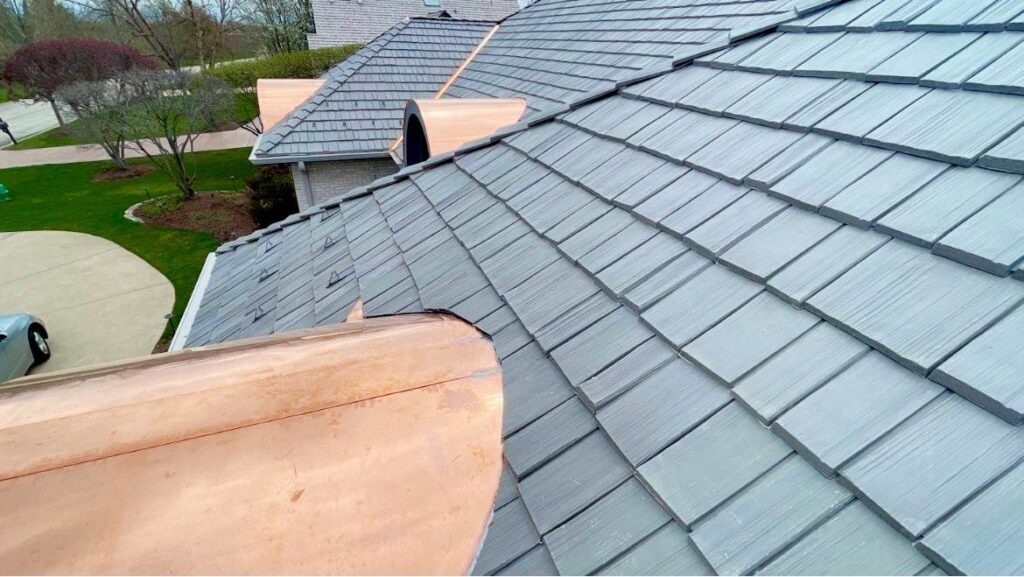
Overview:
Slate roofing is widely regarded as one of the most premium roofing materials available, prized for its unmatched durability, longevity, and natural beauty. Made from natural stone, slate roofs offer a timeless elegance that is often seen on historic and luxury homes. Due to its exceptional strength and longevity, slate roofing is considered an investment that can last for generations, often outliving the home itself. While its high cost and weight make it less common for average homes, slate remains a top choice for those seeking long-term durability and a distinctive, upscale appearance.
Pros:
- Unmatched Durability: One of the most impressive qualities of slate roofing is its longevity. Slate roofs can last up to 100 years or more with proper maintenance, making them one of the most durable roofing options available. This longevity often justifies the higher upfront cost, as homeowners won’t need to replace their roof for decades, or possibly ever. For those who want a roofing material that will stand the test of time, slate is the ultimate choice.
- Natural Appearance: Slate offers a unique, natural beauty that is hard to replicate with other materials. Its earthy tones and textured surface create a sophisticated and timeless look that enhances the architectural appeal of any home, especially historic or upscale properties. Because slate is a natural stone, each tile is unique, adding to the roof’s overall character and charm. It’s an excellent option for homeowners who want their roof to make a statement while blending seamlessly with the environment.
- Fire Resistant: As a natural stone, slate is completely fireproof, providing superior protection in areas prone to wildfires or extreme heat. This inherent fire resistance not only offers peace of mind but also can reduce insurance costs in some areas. Homeowners can rest assured that their slate roof will offer an additional layer of safety in the event of a fire.
- Eco-Friendly: For environmentally-conscious homeowners, slate is an excellent choice. Being a natural material, slate is sustainable and eco-friendly. It doesn’t rely on chemical processing and has minimal environmental impact compared to synthetic roofing materials. Additionally, its long lifespan means fewer resources are used for replacements, and old slate tiles can often be repurposed or recycled, reducing waste.
Cons:
- High Cost: One of the biggest drawbacks of slate roofing is its high cost. Slate is one of the most expensive roofing materials on the market, not only in terms of the material itself but also the specialized labor required for installation. The combination of these factors means that slate roofing is often out of reach for budget-conscious homeowners. However, for those willing to invest in a roof that will last a century or more, the long-term benefits can outweigh the initial expense.
- Weight: Slate is an extremely heavy material, and its significant weight requires additional structural support for most homes. Before installation, homeowners may need to reinforce their roof’s framing to accommodate the added weight, which adds to the overall cost of the project. This weight factor can also limit its suitability for certain types of homes or structures that cannot support the additional load.
- Limited Availability: Finding qualified contractors with experience in slate roofing can be challenging. Slate requires specialized knowledge and expertise for proper installation, and not all roofing contractors are equipped to handle such projects. Homeowners may need to search for skilled professionals who can manage the complexities of slate installation, which can lead to delays or higher labor costs.
Best For:
Slate roofing is best suited for homeowners who have the budget to invest in a high-end, long-lasting roofing material. It is especially popular for historic or luxury homes where aesthetics and durability are top priorities. Slate’s combination of beauty, strength, and fire resistance makes it an ideal choice for those seeking a roof that will last a lifetime and provide exceptional protection. While the cost may be prohibitive for some, the long-term benefits of slate roofing make it a worthwhile investment for those looking for the best in both form and function.
Wood Shingles and Shakes
Overview:
Wood shingles and shakes have long been admired for their rustic and natural aesthetic, making them a popular choice for homeowners seeking a unique, traditional look. Often used in historic homes, cabins, or cottages, wood roofing offers a distinct charm that other roofing materials struggle to replicate. Typically made from cedar, redwood, or pine, wood shingles and shakes are crafted from natural materials, making them an eco-friendly option for those who prioritize sustainability. However, they also come with specific challenges, such as the need for regular maintenance and potential fire risks, making them a better fit for certain homeowners and environments.
Pros:
- Natural Aesthetic: One of the most significant benefits of wood shingles and shakes is their unique, timeless appearance. The natural beauty of wood can enhance the architectural style of a home, adding warmth and character that is difficult to achieve with other roofing materials. Over time, wood shingles develop a weathered patina that adds even more charm to the roof, making them particularly well-suited for historic homes or properties in natural settings.
- Insulation: Wood provides natural insulation, helping to regulate indoor temperatures more effectively than some other roofing materials. The insulating properties of wood shingles and shakes can contribute to increased energy efficiency, reducing the need for artificial heating and cooling. This can lead to lower energy bills, especially in regions with fluctuating temperatures.
- Eco-Friendly: For environmentally-conscious homeowners, wood shingles and shakes offer a more sustainable roofing option. Wood is a renewable resource, and many wood shingles are harvested from sustainable forestry practices. Additionally, wood shingles are biodegradable, which reduces their environmental impact at the end of their lifespan compared to non-renewable materials like asphalt or metal.
Cons:
- Fire Risk: One of the most notable drawbacks of wood roofing is its susceptibility to fire. Unless treated with fire-resistant coatings, wood shingles and shakes pose a higher fire risk than other roofing materials, particularly in areas prone to wildfires. Homeowners should be aware of local fire safety regulations and consider investing in fire-resistant treatments to reduce the risk.
- High Maintenance: Wood roofs require more regular maintenance than other types of roofing materials. Without proper care, wood shingles and shakes are prone to rot, mold, and insect infestation, especially in humid or damp climates. Homeowners must be willing to commit to routine inspections, cleaning, and repairs to keep their wood roof in optimal condition, which can add to the overall cost and effort required for upkeep.
- Shorter Lifespan: While wood shingles and shakes offer natural beauty, they tend to have a shorter lifespan compared to materials like metal or slate. Typically, wood roofs last around 20-30 years, depending on the climate and how well they are maintained. In regions with extreme weather conditions, such as heavy rainfall or snow, the lifespan of wood roofing may be even shorter without proper care and maintenance.
Best For:
Wood shingles and shakes are ideal for homeowners who value a natural, rustic appearance and are prepared to invest the time and effort required for regular maintenance. These roofs are particularly well-suited for historic homes, cottages, and properties in rural or natural settings, where the aesthetic of wood roofing can enhance the overall look and feel of the home. However, those considering wood roofing should be aware of the fire risks and maintenance requirements associated with this material and be prepared to take the necessary steps to keep their roof in good condition.
Synthetic Roofing Materials
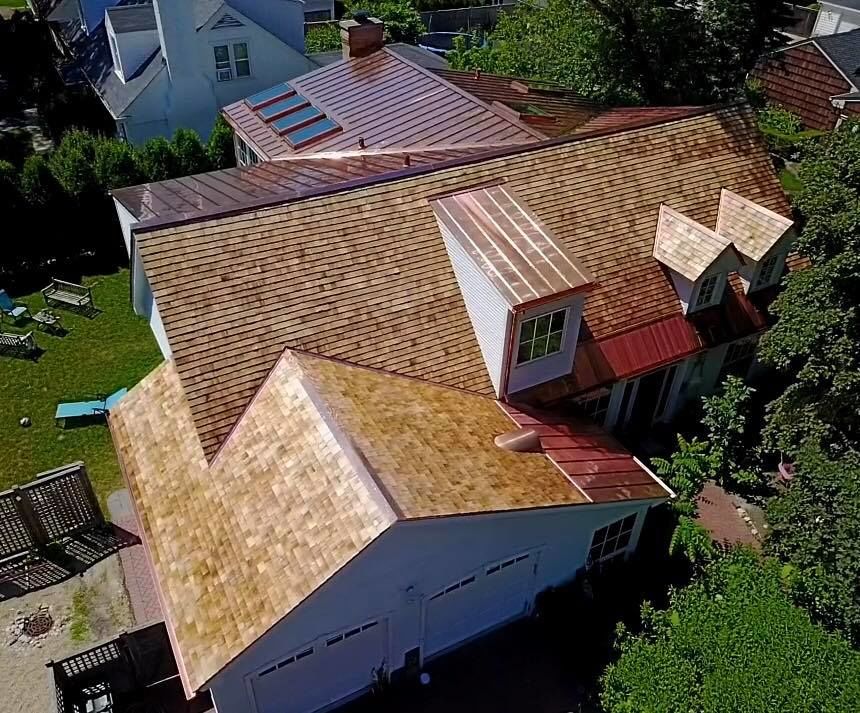
Overview:
Synthetic roofing materials have gained popularity in recent years as a versatile and cost-effective alternative to traditional roofing options like slate, wood, or tile. Designed to replicate the look and feel of these natural materials, synthetic roofing is often made from rubber, plastic, or polymer blends, providing homeowners with an aesthetically pleasing solution without the heavy weight or high cost associated with natural materials. Thanks to advancements in manufacturing, synthetic roofs offer impressive durability, making them an attractive option for those looking for a modern roofing solution with long-lasting benefits. In addition to their affordability, synthetic materials can offer enhanced weather resistance, helping protect your home from the elements.
Pros:
- Affordability: One of the most appealing advantages of synthetic roofing materials is their affordability. Compared to natural materials like slate or wood, synthetic options are typically much more cost-effective, both in terms of material and installation. This makes them an excellent choice for homeowners who want a high-quality, attractive roof without the financial strain of investing in more expensive traditional roofing.
- Lightweight: Synthetic roofing materials are significantly lighter than their natural counterparts, such as slate or tile, which can weigh down a home’s structure. Because of their lightweight nature, synthetic roofs are easier to install and often don’t require the additional structural support that heavier materials might need. This reduces the labor and installation costs, providing homeowners with a simpler and more efficient roofing solution.
- Durable: Synthetic roofing materials are engineered to withstand a variety of extreme weather conditions, making them highly durable and long-lasting. Whether it’s heavy rainfall, hail, wind, or extreme heat, synthetic materials are designed to resist mold, insects, and other common issues that can affect natural roofing materials. This durability translates to lower maintenance and fewer repairs, saving homeowners time and money over the life of their roof.
- Eco-Friendly Options: For environmentally-conscious homeowners, many synthetic roofing materials offer eco-friendly benefits. Some synthetic roofs are made from recycled materials, such as rubber or plastic, reducing the environmental impact of manufacturing. Additionally, because synthetic materials are durable and long-lasting, they don’t need to be replaced as frequently as some natural materials, which helps reduce waste.
Cons:
- Appearance: While synthetic roofing materials are designed to mimic the look of traditional materials, such as slate or wood, they may not always capture the same level of aesthetic appeal. Depending on the quality of the synthetic material, some homeowners may notice a difference in texture or appearance when compared to natural roofing options. For those prioritizing authenticity and the unique look of natural materials, this could be a downside.
- Newer Technology: As a relatively new roofing option, synthetic materials don’t have the same long-term track record as more traditional materials like slate or tile. While synthetic roofs are designed to be durable, their performance over several decades has not been as thoroughly tested as natural materials. Homeowners should be mindful of the potential for unknown long-term issues when choosing synthetic roofing.
Best For:
Synthetic roofing materials are best suited for homeowners who want the appearance of traditional roofing materials, such as slate or wood, but are seeking a lower-cost and lower-maintenance alternative. They are ideal for those living in areas with extreme weather conditions, as their durability ensures reliable protection. Additionally, synthetic roofs are a great option for eco-conscious homeowners looking for sustainable materials without compromising on performance or style.
Green Roofing
Overview:
Green roofs, also known as living roofs, are an innovative roofing solution that involves covering the roof of a building with vegetation, soil, and a waterproof membrane. These roofs are gaining popularity, especially in urban environments, for their wide range of eco-friendly benefits. Green roofs come in various forms, from extensive systems with minimal vegetation to intensive roofs that support a wide variety of plant life. By transforming unused rooftop spaces into lush, green environments, green roofs not only improve the aesthetic appeal of a building but also provide significant environmental and economic benefits.
Pros:
- Energy Efficiency: One of the primary advantages of a green roof is its ability to provide natural insulation for a building. The layer of vegetation helps regulate indoor temperatures by reducing heat absorption during the summer and preventing heat loss during the winter. As a result, green roofs can significantly lower energy costs for heating and cooling, making them an energy-efficient choice for homeowners and businesses alike. This improved insulation also leads to increased comfort inside the building, as temperature fluctuations are minimized.
- Environmental Benefits: Green roofs offer numerous environmental advantages, including improving air quality by filtering pollutants and increasing oxygen production. Additionally, they help reduce the urban heat island effect, where densely populated areas experience higher temperatures due to the abundance of concrete and asphalt. By absorbing sunlight and providing a cooling effect, green roofs can make cities more livable and sustainable. Furthermore, green roofs promote biodiversity by creating new habitats for birds, insects, and other wildlife, contributing to the preservation of local ecosystems.
- Stormwater Management: Another key benefit of green roofs is their ability to manage stormwater runoff. Traditional roofs allow rainwater to flow directly into drainage systems, increasing the risk of flooding in urban areas. In contrast, green roofs absorb and retain rainwater through the soil and vegetation, reducing the amount of runoff that enters storm drains. This natural water management system can help mitigate the risk of flooding, reduce the strain on city drainage systems, and even improve water quality by filtering pollutants before the water is released.
Cons:
- Cost: While green roofs offer many benefits, they do come with a higher price tag compared to traditional roofing materials. The installation process is more complex and requires specialized expertise to ensure the waterproofing, drainage, and vegetation systems function properly. Additionally, the materials used for green roofing, such as the waterproof membrane and soil layers, can be more expensive than conventional roofing materials. For many homeowners and businesses, the initial investment in a green roof may seem high, but the long-term savings in energy costs and environmental impact can help offset the cost.
- Maintenance: Unlike traditional roofs, green roofs require ongoing maintenance to ensure both the health of the vegetation and the structural integrity of the roof. Depending on the type of green roof (extensive or intensive), maintenance can range from occasional weeding and irrigation to more frequent care, such as pruning and plant replacement. It’s essential to monitor the drainage system and ensure that the waterproof membrane is functioning correctly to prevent water damage to the building. While maintenance can be time-consuming and costly, neglecting it can lead to long-term issues that are expensive to fix.
Best For:
Green roofs are best suited for environmentally-conscious homeowners or businesses that are looking to reduce their carbon footprint and enjoy the aesthetic and functional benefits of a living roof. These roofs are especially valuable in urban environments where green space is limited, as they offer a unique opportunity to transform rooftops into productive, eco-friendly spaces. Ideal for individuals and organizations committed to sustainability, green roofs offer a way to promote energy efficiency, enhance biodiversity, and contribute to the overall health of the environment.
Choosing the Right Roofing Material
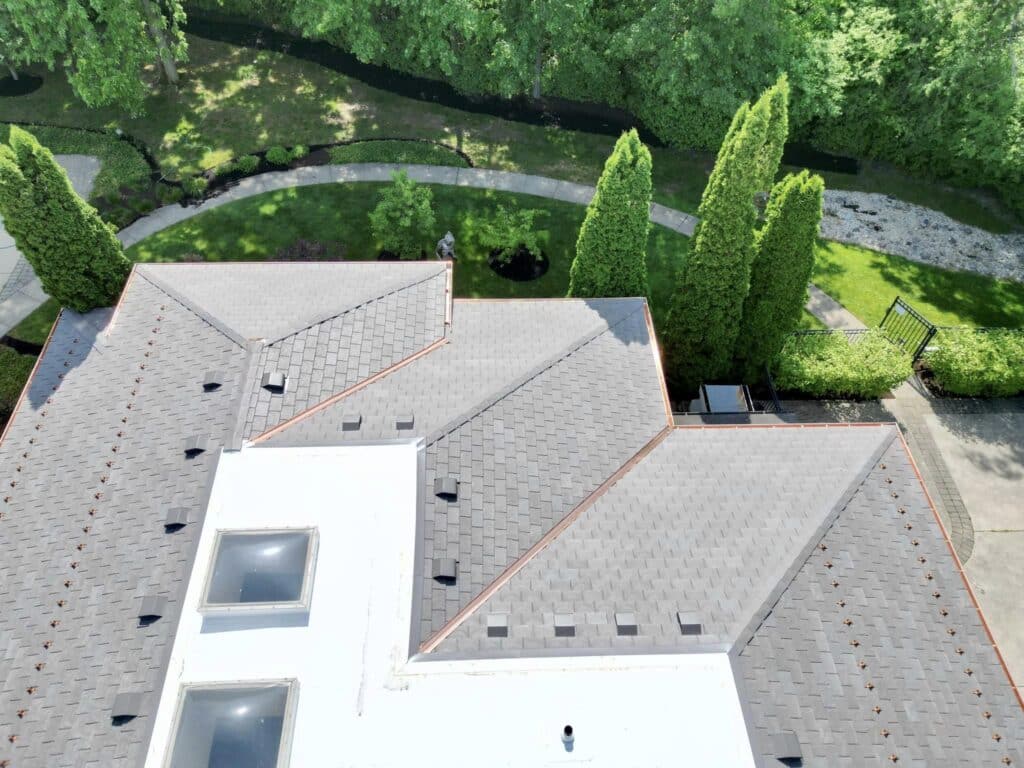
Choosing the best roofing material depends on several factors, including your budget, aesthetic preferences, and local climate. It’s important to consider the durability, cost, and maintenance requirements of each material before making a final decision. For example, while asphalt shingles may be cost-effective and easy to install, they may not provide the longevity or durability of metal or slate roofing in harsher climates.
Additionally, always consider the architectural style of your home or building when selecting a roofing material. Certain materials like clay tiles or wood shakes may complement specific styles, while modern metal roofs may suit contemporary homes.
Conclusion
The type of roofing material you choose has a lasting impact on the durability, efficiency, and aesthetic appeal of your property. Whether you’re looking for an affordable option like asphalt shingles or a long-lasting solution like slate or metal roofing, each material has its own advantages and drawbacks. Understanding the differences between these materials can help you make the right decision for your home or business.
At Severe Storm Restorations, LLC, we specialize in roof repairs and installations for all types of roofing materials. Contact us today at (855) 742-7663 to discuss your roofing needs and schedule a consultation with our expert team.
